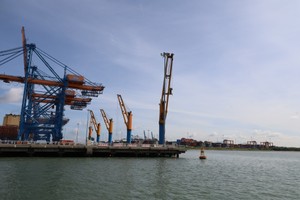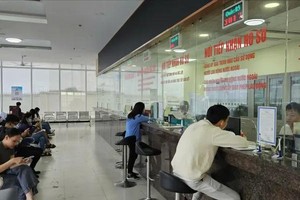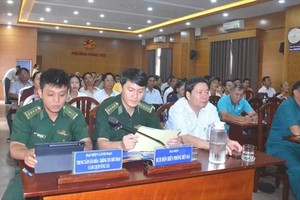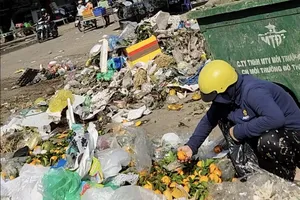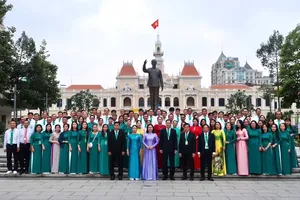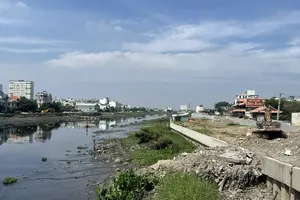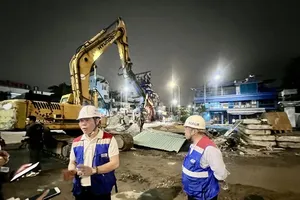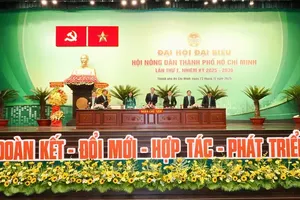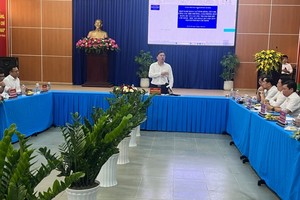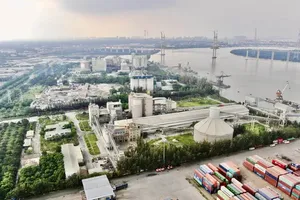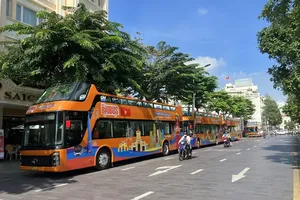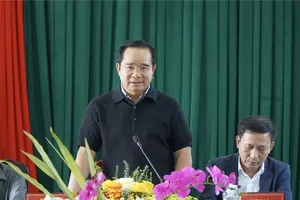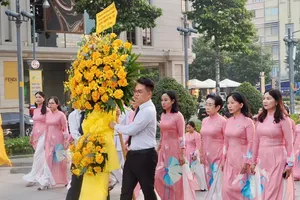 |
Heavy rain causes flooding on Nguyen Van Khoi Street in Go Vap District (Photo: SGGP) |
The rain on May 21 resulted in severe flooding of up to 40cm in various streets in Thu Duc City, Go Vap District, and Binh Tan District. A similarly heavy rain three days ago led to the same consequences.
Assoc. Prof. Dr. Ho Long Phi, former Head of the Institute of Water and Climate Change (under Vietnam National University-HCM) who has over 20 years studying urban flooding measures, informed that this state is not at all new to HCMC. He added that 10 years ago, the city identified 150 hot spots of urban flooding, mostly in the downtown districts of 1, 3, 4. At that time, HCMC allocated over VND50 trillion (US$2.13 billion) from Official Development Assistant (ODA) loans to launch renovation projects for the canals of Nhieu Loc – Thi Nghe, Tan Hoa – Lo Gom, Tau Hu – Ben Nghe as practical solutions.
However, as the money quickly depleted, it was impossible to cover outskirt districts like Thu Duc City, Go Vap District, Binh Tan District, District 12. This financial shortage also leads to tardiness in current urban flooding control projects. Mobilizing social resources for this aspect, especially water supply and drainage, seems hopeless as there is little chance of capital recovery after the completion of such projects. this has become an unequal confrontation between urbanization and developing suitable drainage systems.
Dr. Phi also explained the reason why high-ground areas still suffer from this flooding after heavy rain, saying that urbanization has prevented rainwater from seeping into underground water routes or running into rivers via sewer systems. For instance, the land along Nguyen Van Khoi Street of Go Vap District used to be empty, making it easy for rainwater to move. At present, houses and functional buildings are obstructing this flow, along with an unfinished drainage system to Tham Luong Canal, it is not hard to see flooding after each rainfall.
He stressed that there must be feasible solutions to attract social resources to upgrading and synchronizing the city’s drainage systems. This means a balance in spending – revenue in order to have sufficient money for the system’s operation and maintenance. It is advised to collect drainage fees like other countries have done.
It is worth mentioning that HCMC has implemented a VND-10-trillion project to fight against urban flooding due to high tides; yet until now, the project has not completed.
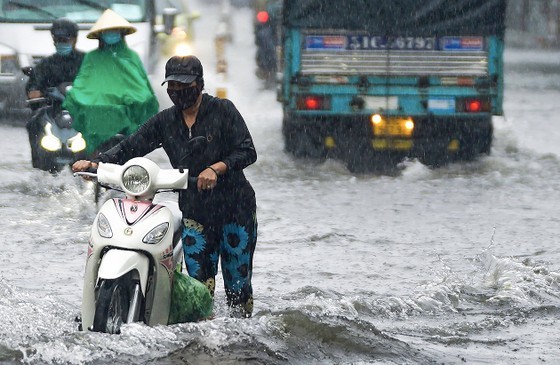 |
Heavy rain causes flooding on Nguyen Van Khoi Street in Go Vap District (Photo: SGGP) |
From a different perspective, Chief Nguyen Duc Vu of the Office of the HCMC Commanding Committee for Civil Defense, Disaster Prevention and Rescue (under the HCMC Department of Agriculture and Rural Development) stated that urban flooding in HCMC is affected by various factors like climate change and consequent harsher weather, rising sea level.
The latest water level at Phu An Station is 1.77m and is predicted to grow higher. The total precipitation in the last few years has not changed much, yet rain intensity to reach 100mm happens more frequently. This has, in a short time, created an overloading state among drainage systems. Meanwhile, existing irrigation works cannot satisfy the demands from these objective factors.
Chief Vu commented that the management tasks for rivers and canals in HCMC are not consistent. There should be a focal unit to take charge of this duty instead of decentralizing it to different departments and state agencies now.
Monitoring data from the Natural Resources and Environment Ministry reveal that certain areas in HCMC show signs of ground subsidence, inevitably affecting the current urban flooding status. Moreover, many tidal control systems have been running for over 10 years without much maintenance while new ones are still being slowly built owing to a lack of capital.
Once more Dr. Vu insisted that a synchronous solution is critical here, ranging from strictly handling acts of encroaching the drainage systems and canals, more effectively managing urbanization, to finding sufficient investments for infrastructure upgrades.
Director Vu Van Diep of the HCMC Center for Technical Infrastructure Management (under the Construction Department) reported that the streets regularly suffering from urban flooding include Nguyen Huu Canh (Binh Thanh District); Ba Van, Truong Cong Dinh, Bau Cat (Tan Binh District); Phan Anh, Ho Hoc Lam (Binh Tan District); Le Duc Tho, Quang Trung (Go Vap District); Bach Dang (Binh Thanh District); Nguyen Van Khoi, Thao Dien, Quoc Huong, Nguyen Van Huong, Duong Van Cam Dang Thi Ranh, Kha Van Can (Thu Duc City).
Director Diep said that to solve this problem, HCMC is renovating its drainage systems on these streets and building new ones in the Eastern part of the city. Simultaneously, the first stage of Nhieu Loc – Thi Nghe wastewater treatment plant construction is being completed, the second stage of capacity upgrading for Binh Hung wastewater treatment plant is being carried out, and investors in other treatment plants are called upon.
Also, HCMC is launching a series of key projects for this aspect, such as dealing with flooding due to high tides taking into account climate change, building infrastructure and renovating the environment along Tham Luong – Ben Cat – Nuoc Len Canals, and upgrading the rainwater sewer systems.
According to the Urban Flooding Control Program for the 2021-2025 Period, HCMC is going to address flooding due to rain and high tide on 13 routes and 7 routes, respectively. This plan immediately encounters obstacles from the Covid-19 pandemic and financial shortages as there is a lack of suitable mechanisms to attract investors.
